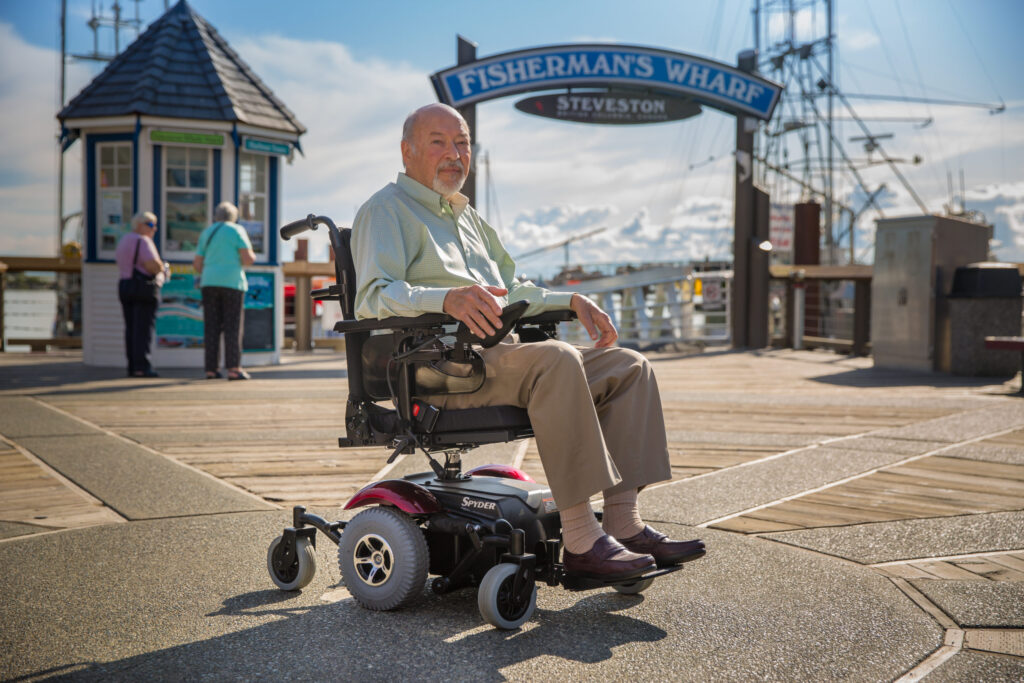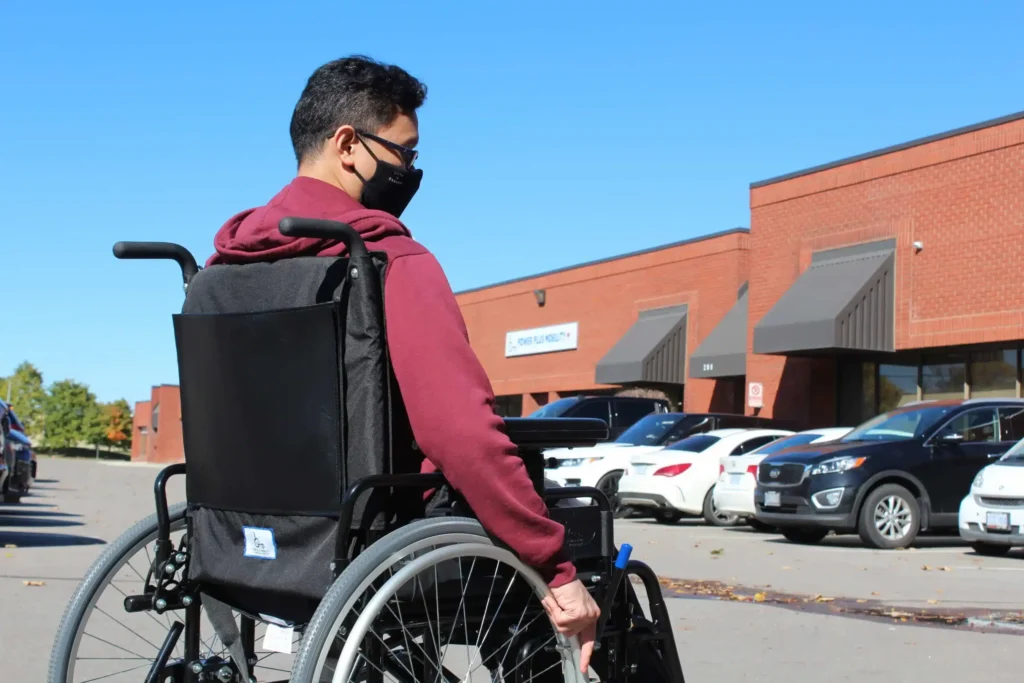
When purchasing a wheelchair, many buyers focus primarily on the upfront cost, assuming that once the wheelchair is paid for, there are no further expenses. However, wheelchair users and their families often find that the total cost of ownership extends far beyond the initial purchase price. Hidden costs, ranging from ongoing maintenance to accessories, can accumulate over time, leading to unexpected financial burdens.
In this article, we’ll explore some of the common hidden costs associated with buying a wheelchair and offer practical tips on how to avoid them, ensuring that your investment in mobility remains both financially manageable and sustainable. For high-quality mobility solutions, explore our product page.
1. Maintenance and Repairs
One of the most significant hidden costs of owning a wheelchair is maintenance and repairs. While many wheelchairs are built to last, like any complex device, they require regular upkeep to function properly. Failure to maintain a wheelchair can lead to costly repairs, reduced performance, and, in some cases, the need to purchase a new wheelchair earlier than expected.
Common maintenance costs include:
- Tire replacement: Tires can wear out over time, especially for manual wheelchairs that are used frequently.
- Battery replacement: Power wheelchairs rely on batteries, which can lose their ability to hold a charge after several years of use.
- Brake checks: Ensuring that the wheelchair’s braking system is functioning correctly is essential for safety.
- Frame repairs: The wheelchair’s frame may need adjustments or repairs if it becomes bent or damaged.
How to Avoid It: To avoid these hidden costs, it’s essential to factor in regular maintenance when purchasing a wheelchair. Some dealers offer maintenance packages or extended service contracts that include routine check-ups and repairs. This can help spread out the cost of maintenance over time and ensure that your wheelchair stays in good working condition.
Additionally, regularly cleaning and inspecting your wheelchair, as well as performing basic maintenance tasks like inflating tires, can prevent some of these repairs from becoming major issues. For more information, visit our contact page to speak with a specialist.
2. Replacement Parts
As wheelchairs are used over time, certain components may need to be replaced due to wear and tear. Parts such as footrests, armrests, wheels, and cushions can deteriorate and require replacement, which can add up over the years.
While basic replacement parts may not be excessively expensive, some specialized parts, especially for power wheelchairs or customized models, can be costly. For instance, high-end motors, battery packs, or specialized seating systems can cost hundreds of dollars to replace.
How to Avoid It: When purchasing a wheelchair, choose a model that offers easy access to affordable replacement parts. Check with your dealer to ensure that replacement parts are readily available and reasonably priced. Additionally, consider buying a wheelchair with modular components that can be replaced individually, rather than needing to replace the entire chair.
It’s also advisable to keep an eye on the wear and tear of essential components and address minor issues before they escalate into costly repairs or replacements. To find compatible replacement parts, browse our product page.
3. Insurance and Coverage Gaps
Health insurance or Medicare may cover part of the cost of a wheelchair, but coverage can vary significantly depending on the type of wheelchair and your insurance policy. Many insurance plans do not cover the full cost of durable medical equipment (DME), which includes wheelchairs. In addition, policies may not cover specialized features like power-assist motors or custom seating.
Even if insurance covers the cost of the wheelchair itself, users may still face out-of-pocket expenses for accessories, repairs, or customizations.
How to Avoid It: Before purchasing a wheelchair, thoroughly review your insurance policy to understand the coverage and any limitations. Work with a dealer who is familiar with insurance claims, as they may be able to guide you through the process and ensure that you maximize your benefits.
If insurance does not fully cover the wheelchair, explore financing options that may be available through your dealer. Many dealers offer payment plans or financing to help spread out the cost of the wheelchair over time. If you have questions about coverage, reach out to us via our contact page.

4. Accessories and Customizations
While a basic wheelchair may be functional, many users find that they need additional accessories or customizations to meet their specific needs. These can include:
- Cushions and pads for added comfort.
- Footrests or leg rests to improve positioning.
- Storage solutions, such as pouches, trays, or cup holders.
- Custom seating systems or backrests for medical purposes.
While these accessories can significantly improve the wheelchair’s comfort and functionality, they often come at an additional cost. Some accessories are relatively inexpensive, but others, such as custom seats, can add up quickly.
How to Avoid It: When budgeting for your wheelchair, make sure to account for potential accessory costs. Ask your dealer for a breakdown of all available accessories and their prices. Consider whether you need each accessory immediately or if some can be added later as your needs evolve.
Also, investigate if certain accessories are bundled with the purchase of the wheelchair. Some dealers offer package deals where accessories are included in the price, which can save you money in the long run. Check our product page for available accessory options.
5. Training and Support
For individuals purchasing specialized wheelchairs, particularly power wheelchairs, learning how to use the wheelchair properly is essential for maximizing its benefits. Dealers may offer training sessions, but this can sometimes come with an additional fee. If the wheelchair requires adjustments or troubleshooting, the dealer’s support services might also come with a cost.
How to Avoid It: Check with the dealer to see if training and support are included in the purchase of the wheelchair or if there are any additional fees. Many dealers offer complimentary or discounted training sessions as part of the initial purchase, especially for more complex devices.
If training is not included, consider asking for a detailed tutorial on how to use and care for the wheelchair. Investing in training upfront can help you avoid costly mistakes and ensure you are using your wheelchair to its full potential. Contact us through our contact page for expert support.
6. Delivery and Setup Fees
Depending on the type of wheelchair and where you purchase it, there may be additional costs associated with delivery and setup. Wheelchairs, particularly power chairs and customized models, may require professional assembly or adjustments, which can add extra costs to the overall purchase.
How to Avoid It: Before completing your purchase, ask the dealer about any delivery or setup fees. Some dealers offer free delivery and setup, especially if you’re purchasing locally. If there are fees, ask for an estimate and compare prices from different dealers.
If you’re purchasing online, be sure to factor in these costs before making your decision. Some online retailers offer free shipping, so it’s worth comparing prices and delivery policies to find the best deal.
7. Cost of Upgrading Over Time
As mobility needs change, some wheelchair users may require upgrades to their existing device. This could involve upgrading the motor, changing seating configurations, or adding assistive technologies. The costs of these upgrades can quickly add up, especially if they involve advanced technology or custom features.
How to Avoid It: To avoid unexpected upgrade costs, try to future-proof your purchase. Choose a wheelchair model that offers flexibility in terms of upgrades and customizations. Speak with your dealer about potential future needs and whether the wheelchair can be easily adapted to accommodate changes in mobility.
While buying a wheelchair is a significant investment, it’s important to be aware of the hidden costs that may arise over time. From maintenance and repairs to accessories and insurance gaps, understanding these costs ahead of time can help you plan better and avoid unexpected expenses.
By doing thorough research, asking the right questions, and working closely with a trusted dealer, you can mitigate these hidden costs and ensure that your wheelchair serves you well for years to come. Consider all aspects of wheelchair ownership, and plan your budget accordingly, so that you can enjoy the freedom and independence that comes with a high-quality, reliable wheelchair. For tailored recommendations, visit our product page or get in touch via our contact page.
To visit our Social Media, please click on Facebook and Instagram


